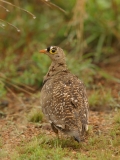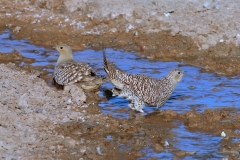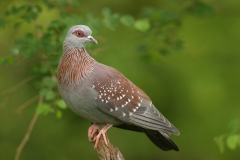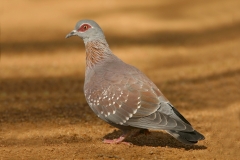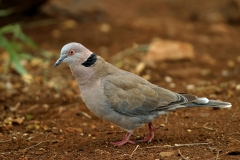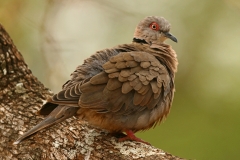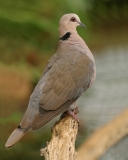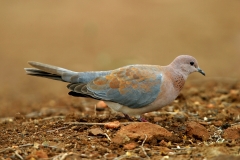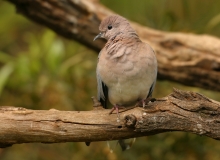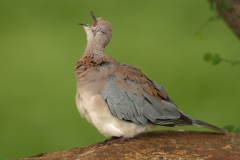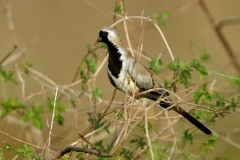African Sandgrouse, Pigeons & Doves
Africa sandgrouse, pigeons and doves are fascinating and sometimes common, but never dull. Their bodies are usually plump, with small heads and short legs. Their feathers are sometimes striking in their colors and patterns. One of the nicest features about them was they were usually approachable. These species are not generally nervous birds. They were good photo subjects.
The sandgrouse were especially interesting to us. Part of the fun was that we saw our first Namaqua Sandgrouse as we slipped over the border into Botswana for just a short distance. Later, we observed this species at a waterhole in the Kalahari Desert. The fascinating thing we learned about this bird is its manner of transporting water to the newly hatched precocial young. The parent birds are gregarious, and appear at watering sources by the dozens. The males have adaptive feathers on their breasts that absorb water. He dips his body into the streaming water, then he carries the supply back to the young birds that may be many miles away.
Fifteen species of pigeons are found in southern Africa, and we saw twelve of them. They were more easily found in moist habitats, especially around the camp compounds. They are often colorful and easily photographed where they frequent human occupied areas. Sometimes a bird’s name truly represents it characteristics. We especially enjoyed the beauty of the Speckled Dove and the vocalizations of the Laughing Dove.
There is an unusual dove that, like the sandgrouse, bears the name, Namaqua. The Namaqua Dove is smaller than most doves. It is more slender bodied, and it is the only dove with a long tail. The black face and neck is unmistakable when the bird is seen in flight. It is common throughout southern Africa. We photographed the first one we saw while in Kruger National Park.
All of the Africa sandgrouse, pigeons and doves were very satisfying and relatively easy to photograph.
